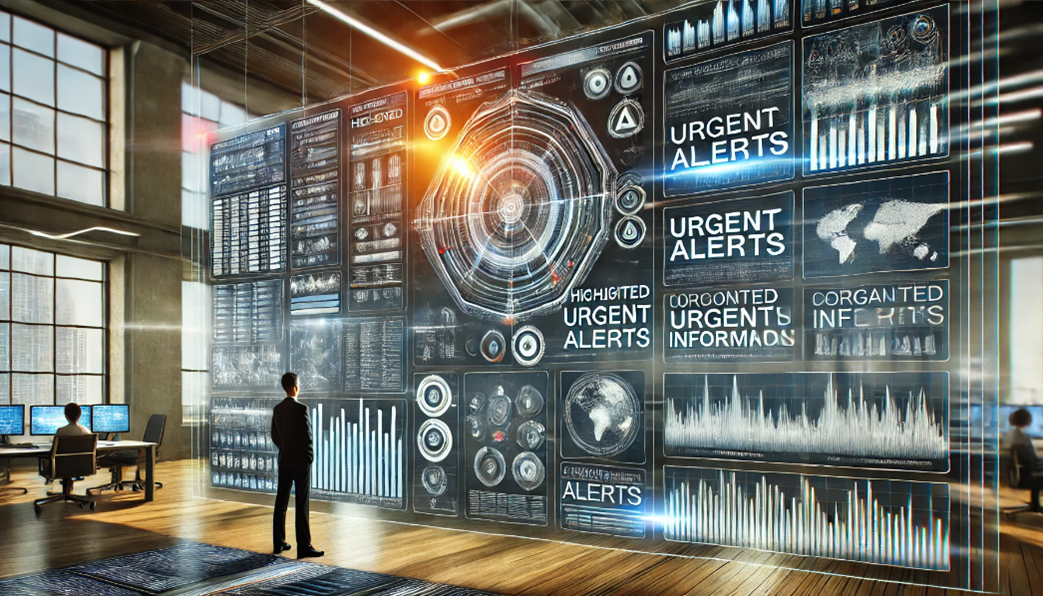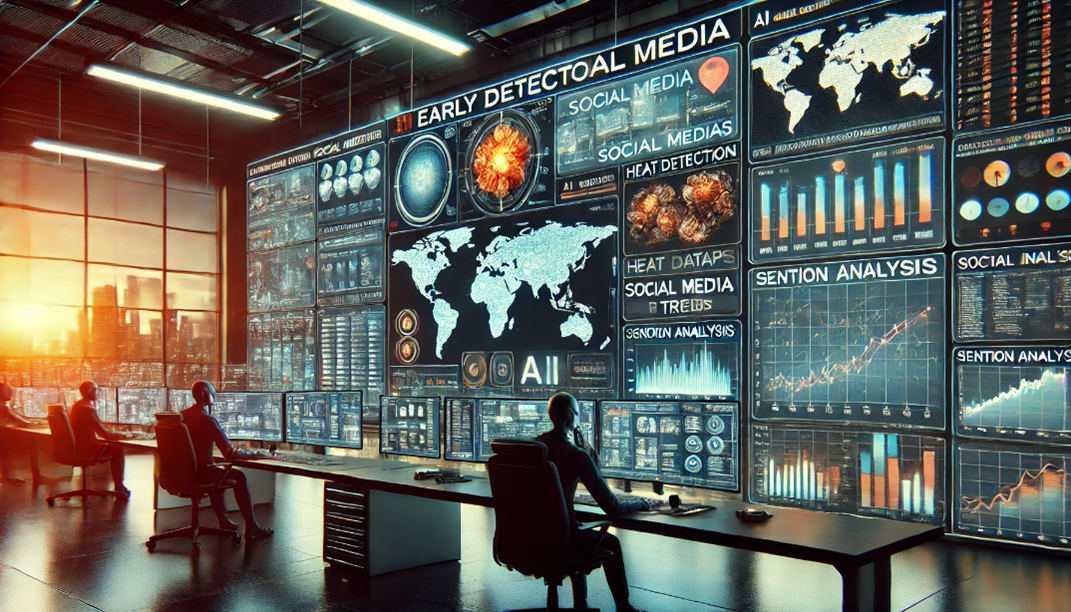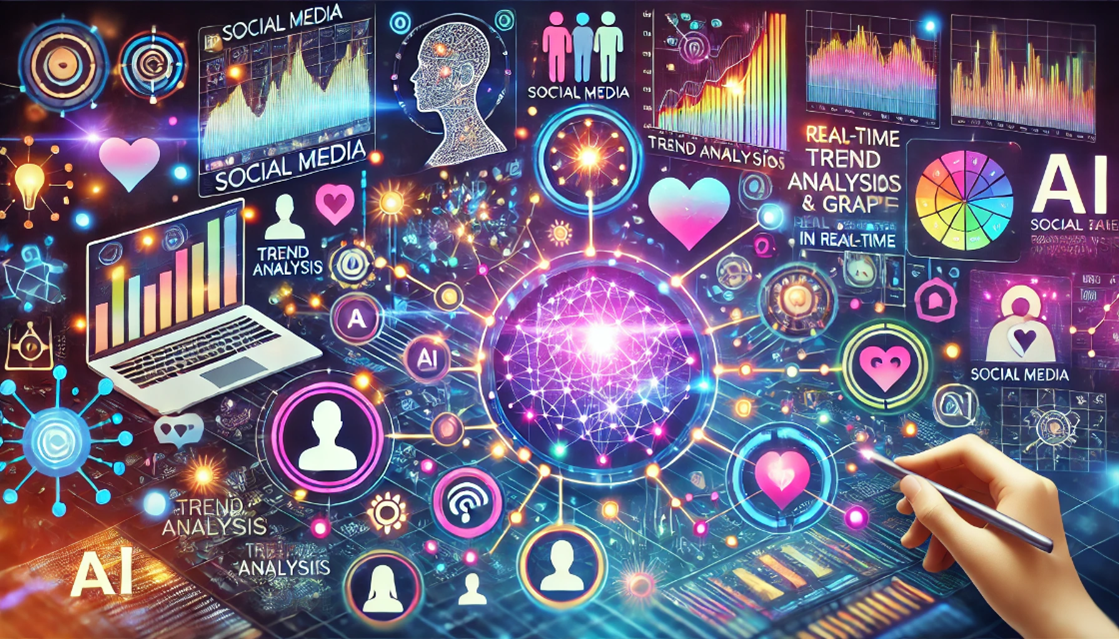How can AI analyze social media and real-time data for better crisis management?

How can AI analyze social media and real-time data for better crisis management?
by Maximilian 02:34pm Jan 27, 2025

In today’s hyperconnected world, social media and real-time data play a pivotal role in crisis management. Platforms like Twitter, Facebook, and Instagram are often the first places where people share news about disasters, accidents, or emergencies. The sheer volume of this data, however, makes it impossible for humans to process efficiently during crises. This is where Artificial Intelligence (AI) steps in, revolutionizing how authorities and organizations handle emergencies.
1. Monitoring Social Media for Early Detection
One of the most critical applications of AI in crisis management is the early detection of emergencies. AI-powered tools can monitor social media platforms in real time, scanning posts, hashtags, and comments for signs of trouble. Here’s how:
Keyword and Hashtag Tracking: AI systems use Natural Language Processing (NLP) to detect crisis-related keywords (e.g., “earthquake,” “flood,” or “explosion”) and hashtags that trend during emergencies. This helps authorities identify the nature and location of the crisis as it unfolds.
Geotagging and Location Analysis: Many social media posts include geotags or location references. AI can extract this data to map where incidents are occurring, even if the user doesn’t explicitly mention the location.
Anomaly Detection: Machine learning models can identify unusual spikes in social media activity, such as a sudden increase in posts about power outages in specific area. This often serves as an early warning system for crises.

2. Real-Time Data Integration for Situational Awareness
AI excels at integrating diverse data streams to provide a comprehensive view of ongoing crises. In addition to social media, it can process data from IoT devices, satellite imagery, and emergency hotlines. By combining these sources, AI offers an accurate and dynamic understanding of the situation.
Crowdsourced Reports: During disasters, people share real-time updates, including photos, videos, and firsthand accounts. AI aggregates this data to identify affected areas and assess the severity of the situation.
Sensor Data: IoT sensors in rivers, forests, or urban areas provide vital information about environmental conditions, such as rising water levels or air quality during wildfires. AI analyzes these inputs alongside social media reports for better accuracy.
3. Filtering and Prioritizing Critical Information
The flood of data during crises often includes irrelevant or misleading information. AI’s ability to filter and prioritize data is invaluable in ensuring that decision-makers focus on what matters most.
Spam Filtering: AI algorithms can identify and ignore irrelevant or duplicate posts, as well as misinformation, ensuring that only verified and actionable data is considered.
Urgency Classification: Machine learning models categorize social media posts based on urgency, distinguishing between general observations and direct calls for help. For example, a post like “trapped under rubble, need help” would be flagged as critical.

4. Visualizing the Crisis in Real Time
Visualization tools powered by AI enhance situational awareness by presenting complex data in an easily understandable format.
Heatmaps and Dashboards: AI generates heatmaps highlighting hotspots of social media activity, showing areas with high distress signals. Dashboards integrate multiple data sources, providing real-time updates on affected regions, available resources, and ongoing rescue operations.
Dynamic Mapping: Using geotagged social media posts and satellite data, AI creates up-to-date maps of the disaster zone, marking damaged infrastructure, blocked roads, and safe zones.
5. Facilitating Communication and Outreach
AI also improves how crisis managers communicate with the public and affected communities:
Chatbots for Assistance: AI-powered chatbots on social media platforms provide real-time updates, answer frequently asked questions, and guide users to emergency resources.
Public Information Dissemination: AI ensures that critical information, such as evacuation routes or weather warnings, reaches the right audience by targeting relevant posts and accounts.
6. Post-Crisis Analysis and Lessons Learned
After the crisis subsides, AI continues to play a role in evaluating the response and planning for the future. It analyzes data collected during the event to assess what worked well and what could be improved, ensuring better preparedness for future emergencies.
Benefits of AI in Social Media and Real-Time Data Analysis
Speed: AI processes vast amounts of data in seconds, providing timely insights during fast-moving crises.
Accuracy: By cross-referencing multiple sources, AI reduces errors and ensures reliable information.
Proactive Response: AI enables authorities to detect crises early and allocate resources effectively.
Scalability: AI systems can handle large-scale disasters, analyzing millions of posts and data points simultaneously.

By leveraging AI, authorities and humanitarian organizations can harness the power of social media and real-time data to respond to crises more effectively. From detecting emergencies early to optimizing resource allocation and communication, AI has become an indispensable tool in modern crisis management.






